How to Recover from Burnout While Still Working
If we want to see a decrease in burnout, organizations need to recognize it, listen to employees, and take action steps accordingly. But, how do you recover from burnout while still working?

Is anyone else just feeling tired? Worn out? Wondering if it is just that time of year? Still recovering from the holiday madness or itching into Spring fever?
Statistics show that 89% of workers experienced burnout in 2023.
I can provide you with plenty more statistics about the relevance of burnout. Chances are I don’t have to do that.
If you’re reading this, you’re likely experiencing burnout in your current position.
If you’re feeling burnt out, it’s not your fault. It appears in all areas of life, but the workplace setting is the most common whether you’re working remotely or in the office. Employees are experiencing it the same no matter what location they’re working from.
86% of full-time remote workers have experienced burnout at their job.
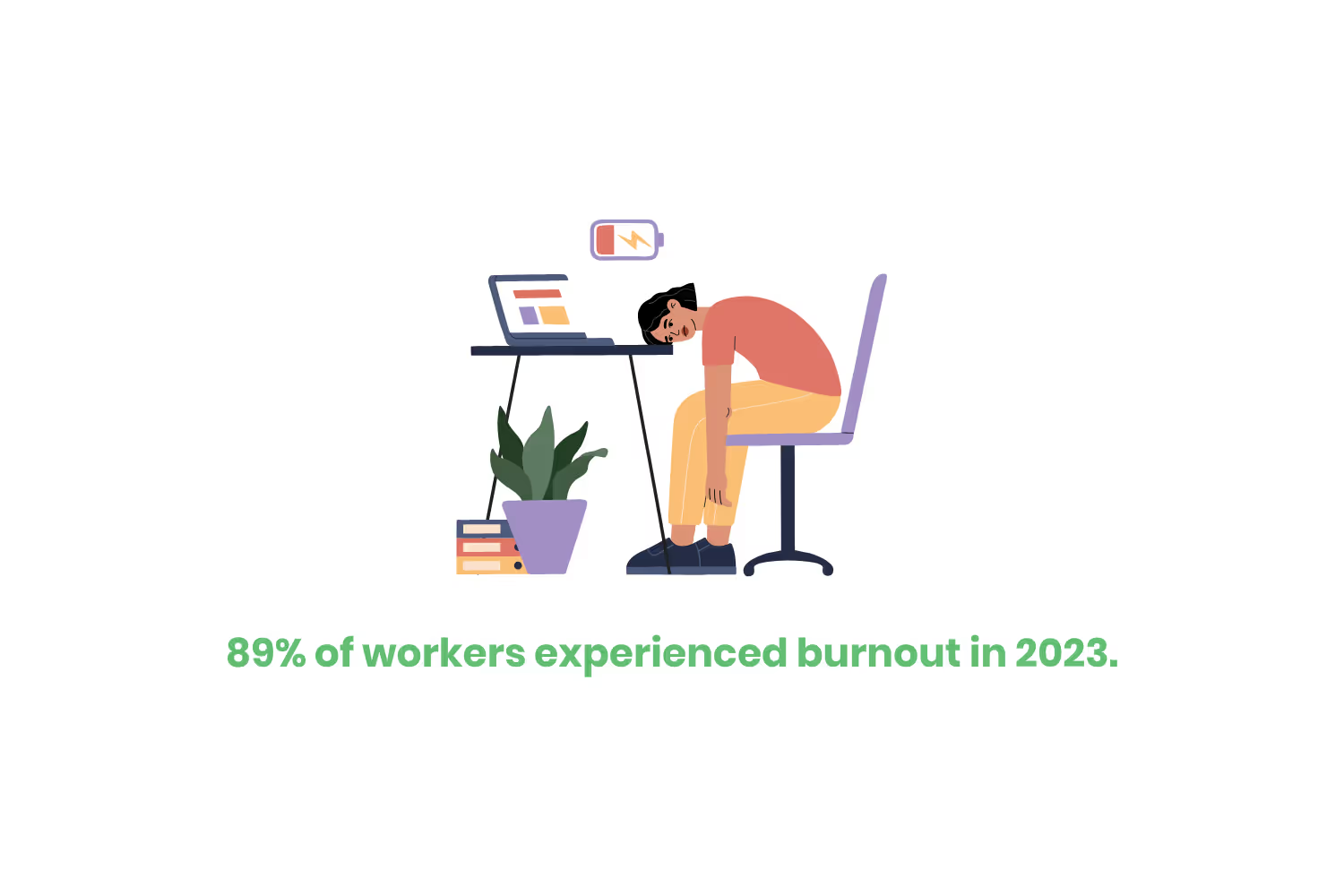
There are multiple roots to the reason why someone would experience burnout. An excessive workload is the leading cause of burnout.
Other contributing factors are a lack of control, support, and or resources. This can look like poor management practices, unhealthy working conditions or environments, and unequal treatment.
All of these factors have something in common. They aren’t necessarily in the employee’s hands to control.
While there are things to do to alleviate the burnout feeling, completely recovering from burnout is not something employees can do on their own.
21% of employees say their company does not offer any program to help alleviate burnout.
If we want to see a decrease in burnout, organizations need to recognize it, listen to employees, and take action steps accordingly. But, how do you recover from burnout while still working?
What's Burnout?
The World Health Organization explains that burnout results from chronic workplace stress that has not been successfully managed.
It’s a continuous or prolonged feeling of stress that leaves one in a state of either emotional, mental, or physical exhaustion. Or it can even look like a mixture of all 3.
Common symptoms of burnout include:
- Physical fatigue
- Emotional exhaustion
- Lack of interest or motivation in work efforts
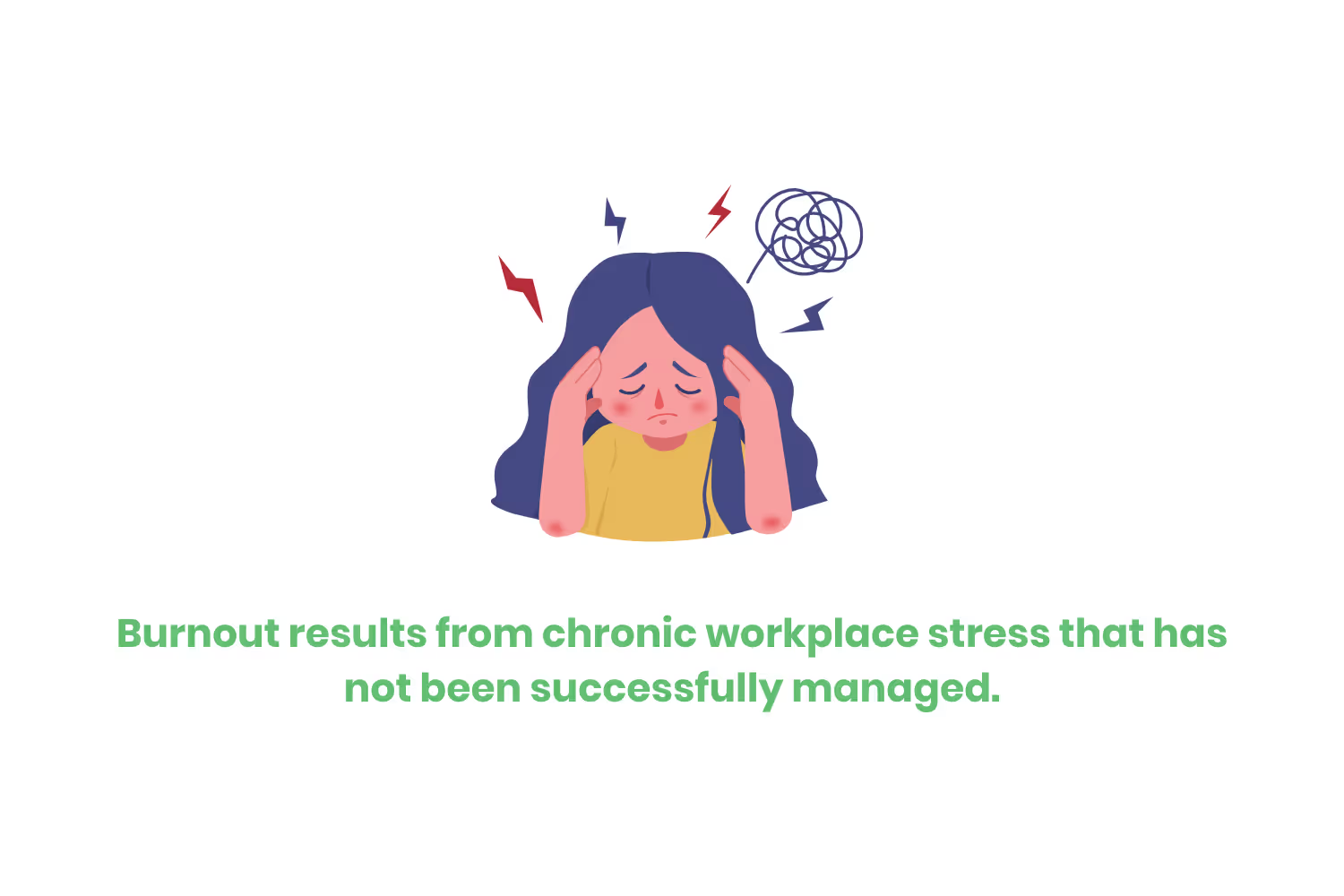
Financial Effects of Burnout
The effects of burnout are physical and emotional for its victims; however, burnout doesn’t just affect employees.
There are financial hits that organizations take when employees experience indications of burnout. Employee turnover is a cost.
SHRM reports that the total costs associated with individual turnovers can range from 90 to 200 percent of the employee's annual salary in the United States.
Workplace stress costs the U.S. economy around $300 billion each year.
Other contributing factors to this hefty monetary amount are absenteeism and diminished productivity.

Stress Vs. Burnout
Burnout can stir up all sorts of negative feelings, anxiety and stress being 2 of them.
Believe it or not, anxiety and stress are common experiences amongst individuals. It’s normal to experience anxiety and stress…in certain settings and circumstances of course.
First-day jitters whether you’re starting a new job or attending school are normal. Feeling a little uneasy before giving a speech or presentation in front of a group of people is common.
Mild levels of anxiety are normal and can be beneficial in some situations. It means that we are alert and aware of things around us. Anxiety is the anticipation of a future concern whether that concern occurs or not.
It can become excessive fear or worry that affects one’s job performance, relationships and other areas of life. This is where the normal anxiety feelings could potentially turn into an anxiety disorder.
Symptoms include:
- Trouble concentrating
- Experiencing nausea/abdominal distress
- Having heart palpitations
- Sweating, trembling, or shaking
- Having a sense of impending danger, panic, or doom
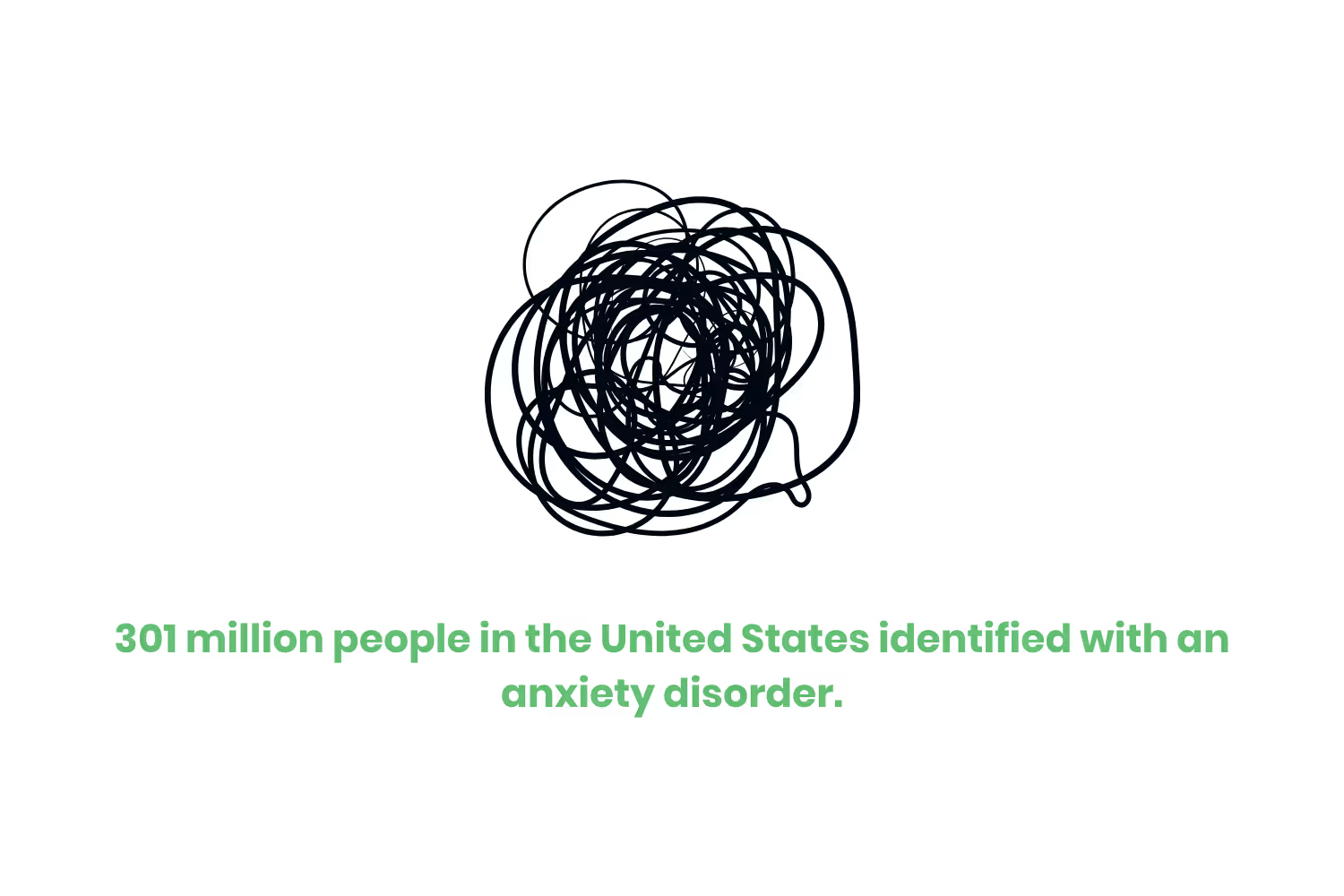
In 2019, 301 million people in the United States identified with an anxiety disorder. Anxiety disorders are the most common mental disorders.
Stress is a state of worry or mental tension caused by a difficult situation. That difficult situation becomes what’s known as your stressor. Again, moderate stress like anxiety is normal. It shows that you care about getting a situation at hand done or resolving an issue.
It becomes a problem when this stress does not go away.
Now that we know about anxiety and stress we can apply these feelings as either regular feelings of stress and anxiety, an anxiety disorder, or an actual symptom of burnout.
It’s important to understand that stress often comes with burnout, but just because you are feeling stressed at work does not necessarily indicate that you are experiencing burnout.
Burnout is a prolonged feeling that results from CHRONIC workplace stressors.
Burnout Vulnerability
Did you know that some groups of people are more vulnerable to experiencing burnout than others?
When comparing burnout rates across generations, Millennial managers are the most burnt out…
- Millennials - 42%
- Gen Z - 34%
- Gen X - 27%
- Baby Boomers - 21%
Women in general are more prone to both anxiety and burnout than men.
74% of women experience work-related stress while 61% of men experience work-related stress.
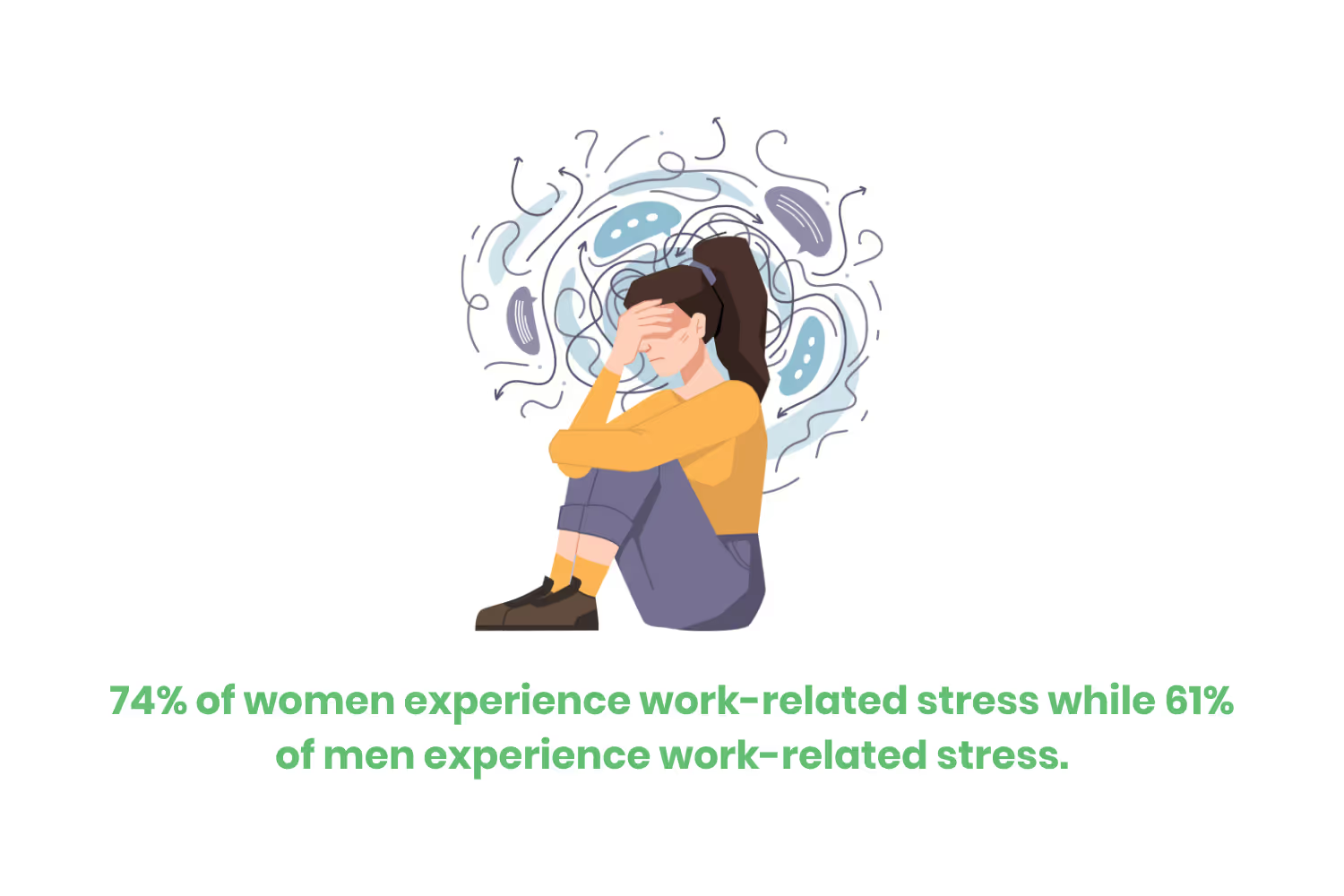
Coping Mechanisms
The most important thing you can do when experiencing burnout is to take care of yourself.
Sounds simple right? Well, when you’re emotionally exhausted even doing the smallest of things can feel tiring. You might not even find joy in the things you usually like to do.
1. Find somebody you can trust to talk about it
It’s okay to ask for help or seek out advice. Connecting with a close friend, family member, or therapist is a great way to get some of those negative feelings and intrusive, repetitive thoughts out of your head and into the open.
Shedding light on some inefficient workplace processes in a professional manner is another way to make Human Resources or managers aware of areas in the workplace that could use improvement.
Depending on the situation and circumstances you may not feel comfortable with most of these options, but even just talking to one person can help you work through thoughts immensely.
Write things down! Journaling is another great resource to decompress and record your thoughts. Check out our therapy blogging blog for more information on that.
2. Make sure you're setting health boundaries
To my people pleasers out there, it’s okay to say no. Your number one concern in the workplace whether or not you’re experiencing burnout is making sure that your job responsibilities are being completed.
If you feel confident about your work ethic and are getting things done, it’s okay to take a step back from other things to make more time for activities you enjoy outside of work.
3. Eat a balanced diet
We hear these next few tips a lot but it’s because it’s so true. What we are feeding our bodies has an impact on our physical and mental health.
When you eat well, you feel good. A healthy diet supports brain function, concentration, memory, and mood regulation. It also can reduce the risk of mental disorders like depression.
Switching the amount of processed foods that you consume with more whole, nutritional options is a great way to start changing your eating habits.
Start with the basics. Don’t overwhelm yourself. Taking little steps at a time in this area over time leads to great results!
Some basics to follow are to make sure you’re staying hydrated, add some nutritious foods to your plates and keep some healthy snacks close by.
Salmon, eggs, nuts, avocados, and blueberries are 5 nutritious foods that can help have a positive impact on your mental health.
4. Exercise
Making a habit of exercising regularly improves cognitive function as well as self-esteem.
It has a positive effect on mental health by reducing anxiety, depression, and other negative moods.
Participate in activities that get you moving, whether that be going on walks, to the gym, or playing a sport.
The minimum recommended amount of weekly exercise for adults is 150 minutes of moderate-intensity activities or 75 minutes of vigorous-intensity activities.
5. Get enough sleep
Studies show that getting enough sleep improves both learning and problem-solving skills. A good sleep schedule promotes creativity, decision-making, and your attention span.
The average amount of sleep an adult should be getting per night is 7 hours.
Maybe a few naps too…that never hurt anyone…right?
6. Find a hobby
Do you love to read? Draw? Play a sport? Video games? It could be anything! Invest some time into a new or old hobby.
Having hobbies outside of work is a great way to decompress as well as promote growth in other areas of life.
Hobbies give you things to look forward to and are a great serotonin boost. There is a sense of accomplishment in achieving new goals and finding value in activities that you enjoy.
An Organization's Part
As I said earlier If we want to see a decrease in burnout, organizations need to recognize areas of burnout, listen to employees, and take action steps accordingly.
Some ways this could look like are:
- Promote open communication so that employees feel comfortable sharing work-related issues.
- Look into offering beneficial programs that invest in employee mental health.
- Offer mental health days so that employees can recharge and rejuvenate their mood and motivation.
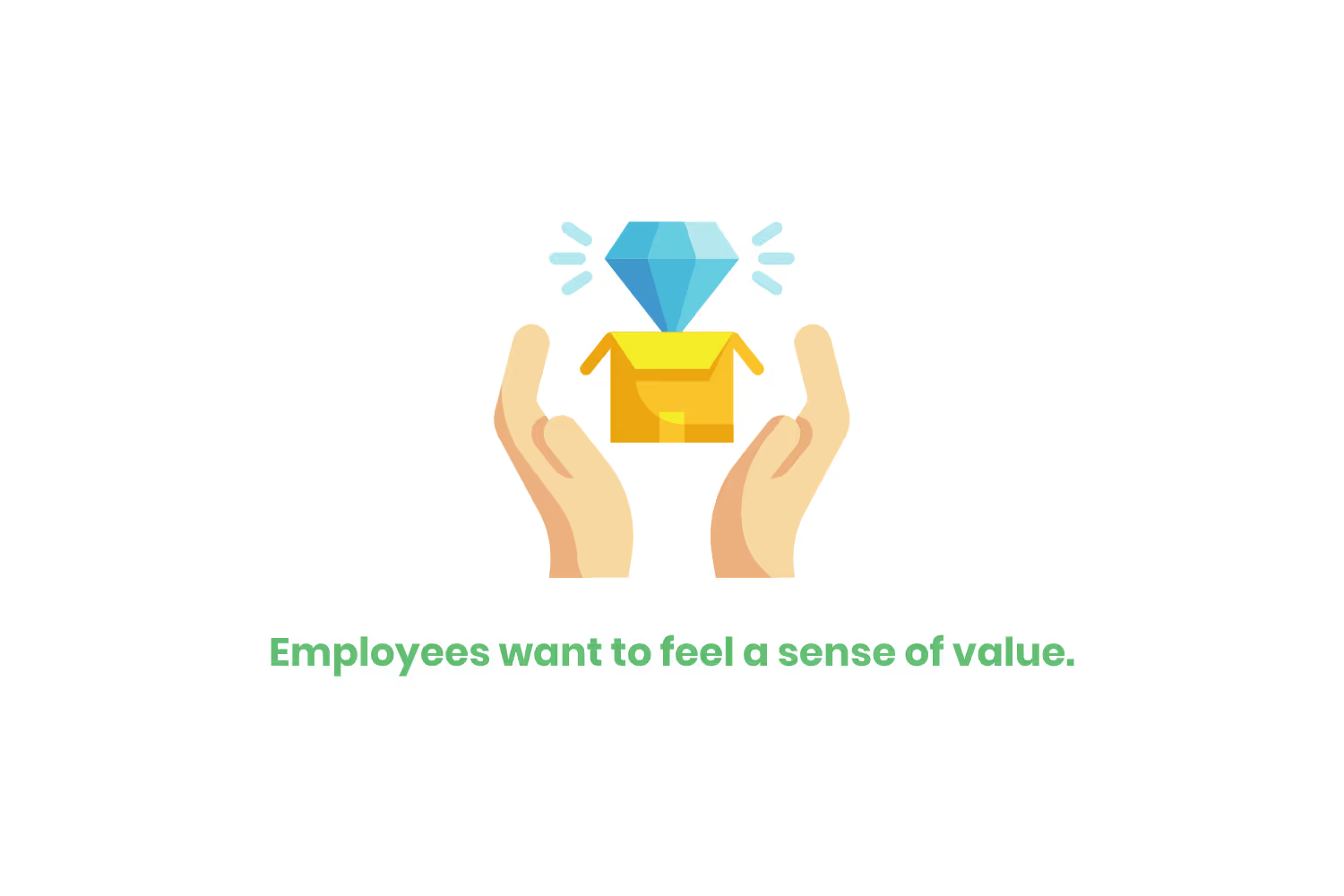
All of these show that you are recognizing the value of your employees. Not only that but you are investing in their well-being also.
Implementing change can be a tedious process but small changes can lead to great results.
Employees want to feel a sense of value.
When an organization shows that they are working toward change, employees will be willing to work with them.
Conclusion
It is up to both the employees and the organization to help prevent burnout in the workplace. Easier said than done.
It’s a very prevalent topic in the media today as more than half of the workforce says that they have experienced burnout in their positions.
We’re all human meaning we experience ups and downs, lows and highs. There are things we can do to alleviate symptoms from the storms while we’re going through them.
Burnout as we can see comes mostly from a lack of proper management and unhealthy working conditions. The workplace needs to be an environment where employees feel appreciated and open communication exists.
These aren’t simple changes to make. As they say, Rome wasn’t built in a day. Slowly but surely if you have the attitude to embrace the necessary changes for improvement you will see results over time.
Emphasize your product's unique features or benefits to differentiate it from competitors
In nec dictum adipiscing pharetra enim etiam scelerisque dolor purus ipsum egestas cursus vulputate arcu egestas ut eu sed mollis consectetur mattis pharetra curabitur et maecenas in mattis fames consectetur ipsum quis risus mauris aliquam ornare nisl purus at ipsum nulla accumsan consectetur vestibulum suspendisse aliquam condimentum scelerisque lacinia pellentesque vestibulum condimentum turpis ligula pharetra dictum sapien facilisis sapien at sagittis et cursus congue.
- Pharetra curabitur et maecenas in mattis fames consectetur ipsum quis risus.
- Justo urna nisi auctor consequat consectetur dolor lectus blandit.
- Eget egestas volutpat lacinia vestibulum vitae mattis hendrerit.
- Ornare elit odio tellus orci bibendum dictum id sem congue enim amet diam.
Incorporate statistics or specific numbers to highlight the effectiveness or popularity of your offering
Convallis pellentesque ullamcorper sapien sed tristique fermentum proin amet quam tincidunt feugiat vitae neque quisque odio ut pellentesque ac mauris eget lectus. Pretium arcu turpis lacus sapien sit at eu sapien duis magna nunc nibh nam non ut nibh ultrices ultrices elementum egestas enim nisl sed cursus pellentesque sit dignissim enim euismod sit et convallis sed pelis viverra quam at nisl sit pharetra enim nisl nec vestibulum posuere in volutpat sed blandit neque risus.

Use time-sensitive language to encourage immediate action, such as "Limited Time Offer
Feugiat vitae neque quisque odio ut pellentesque ac mauris eget lectus. Pretium arcu turpis lacus sapien sit at eu sapien duis magna nunc nibh nam non ut nibh ultrices ultrices elementum egestas enim nisl sed cursus pellentesque sit dignissim enim euismod sit et convallis sed pelis viverra quam at nisl sit pharetra enim nisl nec vestibulum posuere in volutpat sed blandit neque risus.
- Pharetra curabitur et maecenas in mattis fames consectetur ipsum quis risus.
- Justo urna nisi auctor consequat consectetur dolor lectus blandit.
- Eget egestas volutpat lacinia vestibulum vitae mattis hendrerit.
- Ornare elit odio tellus orci bibendum dictum id sem congue enim amet diam.
Address customer pain points directly by showing how your product solves their problems
Feugiat vitae neque quisque odio ut pellentesque ac mauris eget lectus. Pretium arcu turpis lacus sapien sit at eu sapien duis magna nunc nibh nam non ut nibh ultrices ultrices elementum egestas enim nisl sed cursus pellentesque sit dignissim enim euismod sit et convallis sed pelis viverra quam at nisl sit pharetra enim nisl nec vestibulum posuere in volutpat sed blandit neque risus.
Vel etiam vel amet aenean eget in habitasse nunc duis tellus sem turpis risus aliquam ac volutpat tellus eu faucibus ullamcorper.
Tailor titles to your ideal customer segment using phrases like "Designed for Busy Professionals
Sed pretium id nibh id sit felis vitae volutpat volutpat adipiscing at sodales neque lectus mi phasellus commodo at elit suspendisse ornare faucibus lectus purus viverra in nec aliquet commodo et sed sed nisi tempor mi pellentesque arcu viverra pretium duis enim vulputate dignissim etiam ultrices vitae neque urna proin nibh diam turpis augue lacus.



![[ANSWERED] What is a Long-Term Care (LTC) Pharmacy](https://cdn.prod.website-files.com/67e2b8210878abcba6f91ae6/68d687806a075a1cf64659b0_WhatisLongTermCarePharmacy_925.avif)
